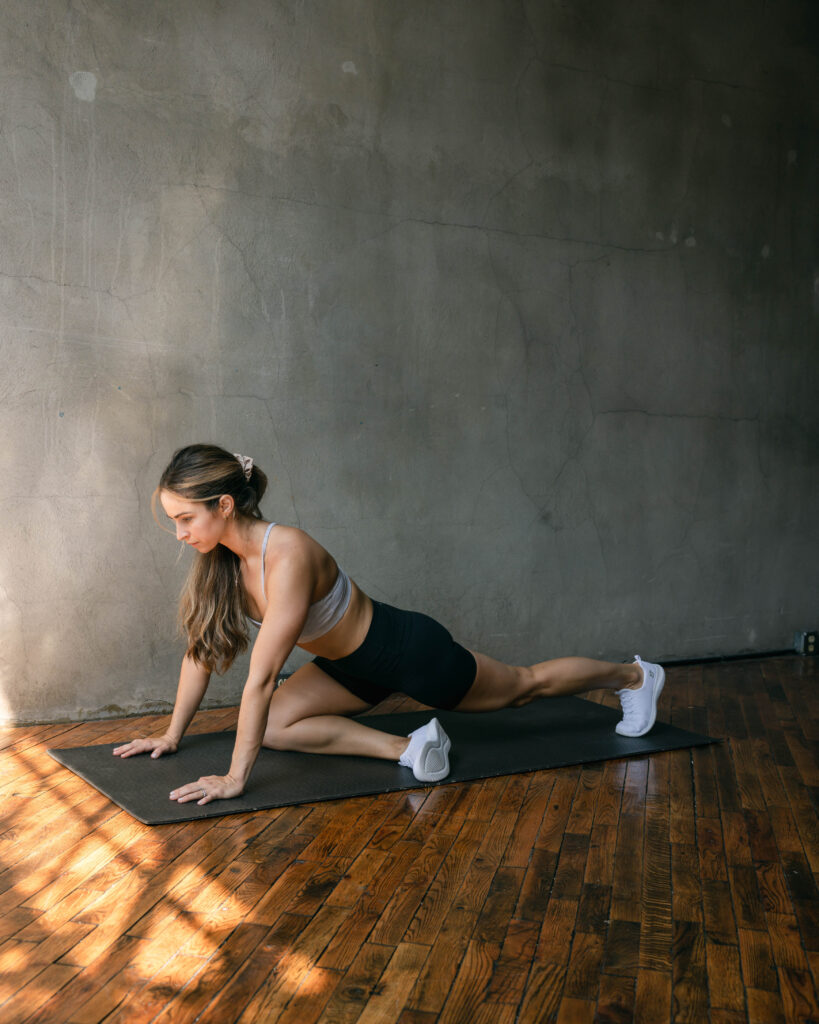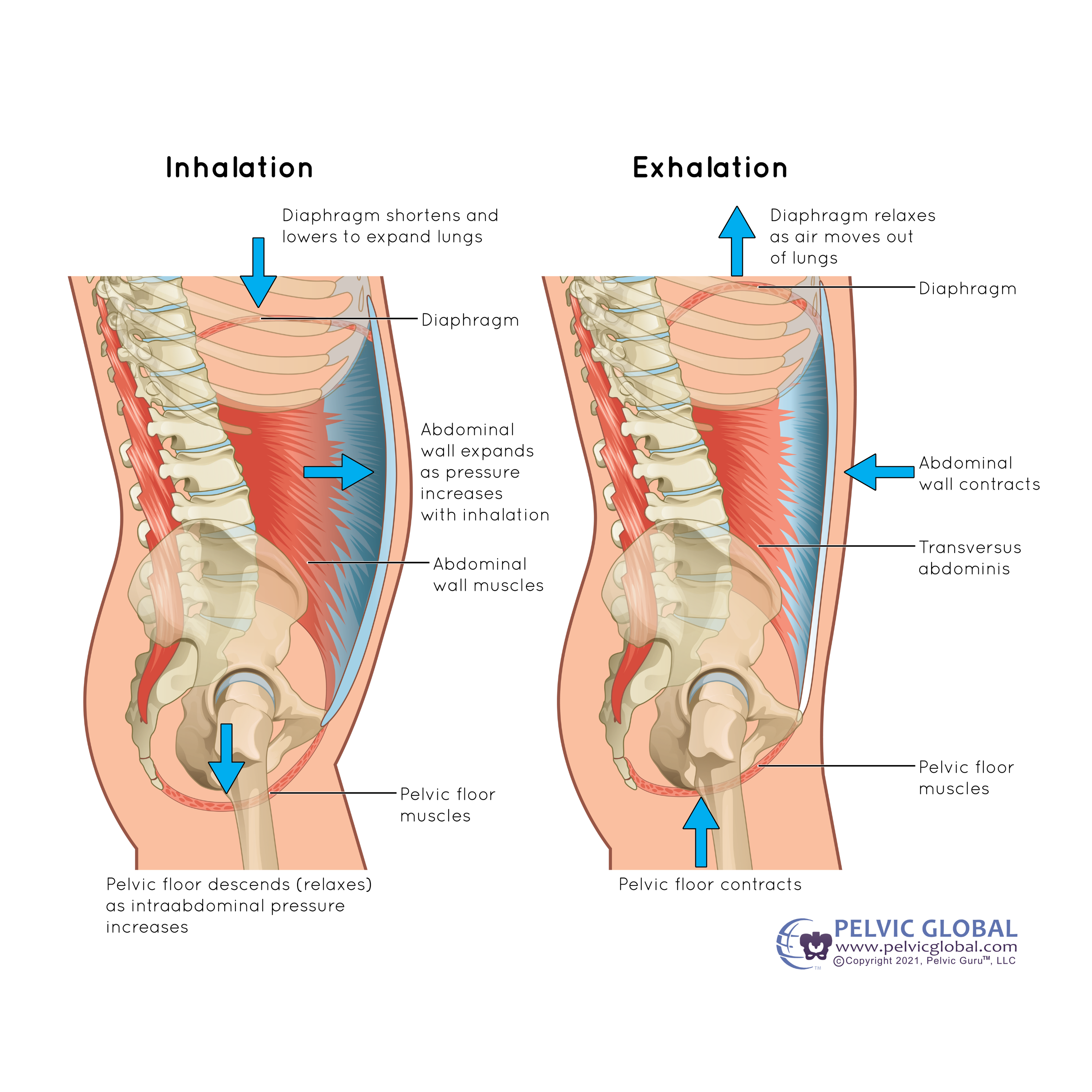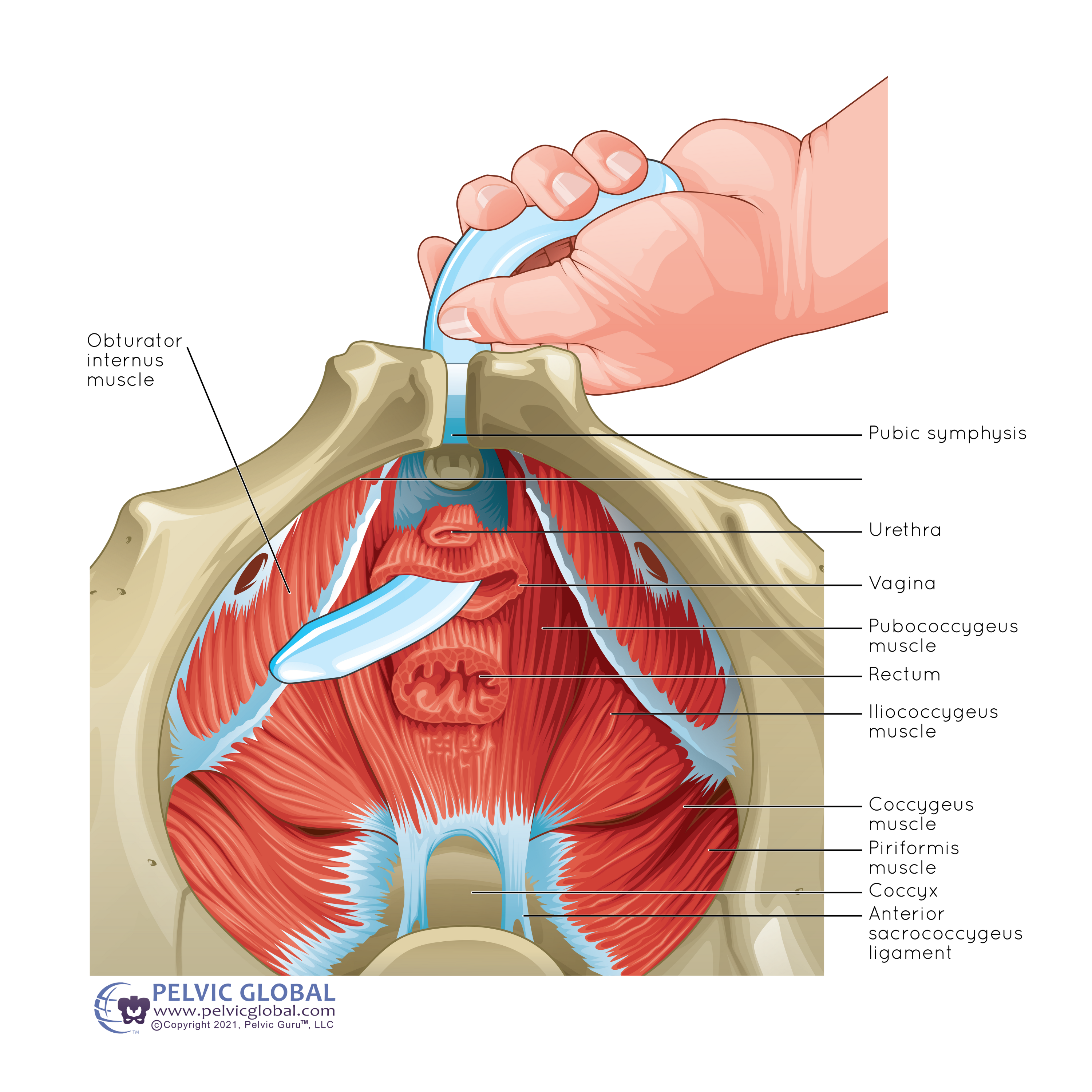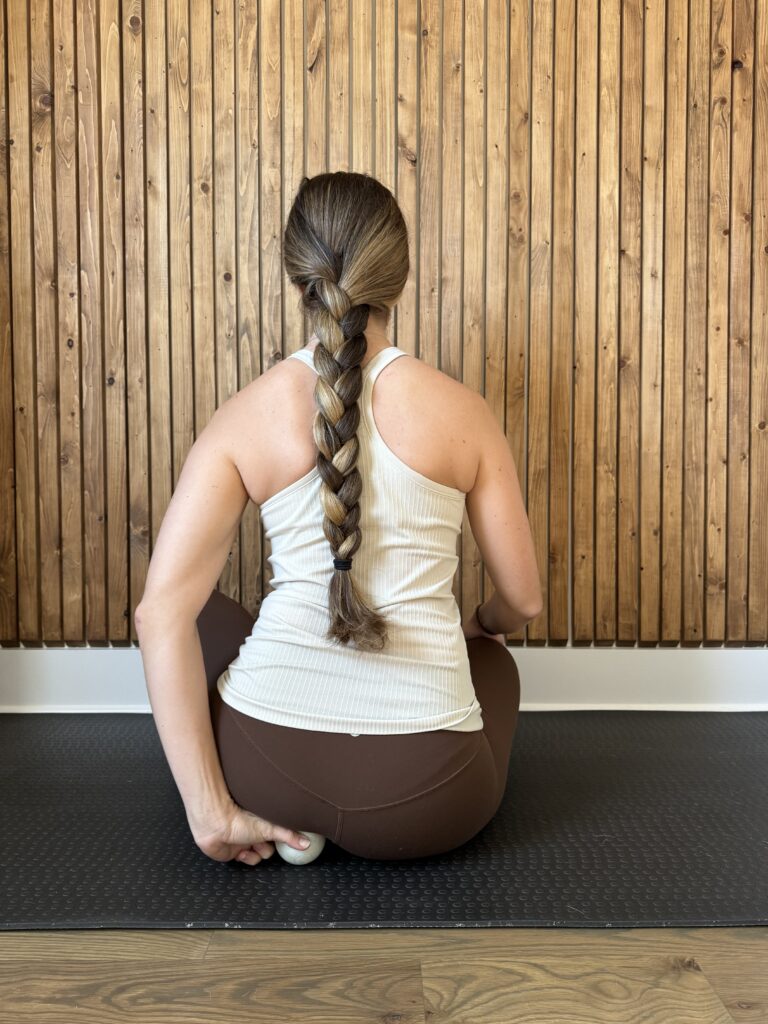How Do I Know If I Have a Tight Pelvic Floor?

If you’ve heard anything about the pelvic floor (and treating it when dysfunction shows up), I bet one word comes to mind: kegels. This was once offered as the one-move-to-fix-everything pelvic floor treatment, and while kegels do have their place, we’ve learned that treating pelvic floor dysfunction actually requires a more comprehensive, nuanced approach. In fact, while kegels might be a helpful exercise for pelvic floor weakness, they can make a tight pelvic floor even tighter.
For women of all ages, the pelvic floor is a central piece of our core strength and the overall functionality of our bodies. Picture your torso as a soda can, requiring just the right amount of pressure to keep things in balance and keep your organs snug and safe inside. Your pelvic floor is the bottom of that can — so when it’s out of balance, a huge number of symptoms can pop up!
In my office, I treat women with pelvic floor issues every single day. Pelvic floor dysfunction can show up in very different ways, and it’s a very common problem — but that doesn’t make it normal. Your body was designed to function well, and if you’re experiencing pain, discomfort, or other symptoms that are hindering your quality of life, there’s absolutely no shame in seeking treatment! These are the main pelvic floor issues I see in my office:
- Pelvic floor tension, which is caused by muscles being too tight
- Pelvic floor weakness, which is caused by a lack of muscular strength in the pelvic floor
- Poor pelvic floor coordination, which occurs when pelvic floor muscles can’t be activated in the appropriate manner or at the right time
These can also show up in any combination of the trio above. Today, we’re digging deeper into pelvic floor tension. Tight muscles are the culprit behind lots of common pains and problems. And honestly, that’s great news — because tight muscles are definitely a treatable condition! Just like any other muscle group in your body, you can train your pelvic floor to relax. But first, let’s talk about why your pelvic floor might be so tight in the first place.
Why do pelvic floor muscles get tight?
Just like there are several things that can cause a soda can to explode upon opening, there are a handful of reasons your pelvic floor gets tight — there’s no “one size fits all” reason for this (or for nearly anything I see in my office)!
Often, a tight pelvic floor comes from an overactive pelvic floor. If you lead a really active lifestyle, especially if you lift heavy, and you haven’t learned how to manage that intra abdominal pressure, your pelvic floor can overcompensate or “forget” when and how to relax. I’ve treated athletes for this in person – it’s so much more common than you might think!
Bad bathroom habits can also lead to pelvic floor tightness. If you’re holding in your pee for hours on a regular basis, or you’re scrolling on the toilet for a really long time, you’re taxing your pelvic floor muscles excessively, which can lead to perpetual overuse and tightness.
A tight pelvic floor can also stem from chronic stress or anxiety! I’m coming out of an intense and stressful season myself, so I know that this can have negative effects on our bodies if we aren’t mindful. I wrote a recent post for some practical, evidence-based (no cuckoo suggestions, I promise!) tips to reduce stress. Your brain and your body will thank you! When it comes to your pelvic floor specifically, stress can cause your pelvic floor to tighten just like any other muscle in your body, like your shoulders or jaw. You might be unconsciously clenching your butt cheeks and squeezing your pelvic floor throughout the day. Take a moment right now for a little self check! Are you clenching your jaw? Are you squeezing your butt cheeks? Release that muscle tension whenever you can.
Childbirth can also affect your pelvic floor muscles in major ways, even after those first six weeks. If you experienced any tearing or trauma during your delivery, you may be dealing with a pelvic floor injury or tearing that’s keeping things tightened. Your pelvic floor muscles want to protect you from further injury, so they will tighten up in response to an injury or trauma — regardless of how big or small!
If none of these apply specifically to you, remember that there are many underlying causes for pelvic floor tightness. Your physical therapist can help you identify the root cause, but you can probably spot some of the symptoms yourself.
12 signs you may have a tight pelvic floor
Typically, a tight pelvic floor shows up in two major ways: dysfunction in the bathroom and pain with regular activities.
Dysfunction in the bathroom
1. Frequent UTIs
There are several reasons we get UTIs as women — but if they’re recurrent, talk to your provider about the possibility of pelvic floor dysfunction as the root cause. When the muscles in the front portion of your pelvic floor (which wrap around the urethra) cannot relax, this can cause incomplete emptying! In addition to frequent urination, this can also cause irritation and infection over time.
2. Burning sensation while peeing
When your pelvic floor muscles are overused, they can spasm, which limits your urethra’s ability to release urine well. That strain can cause a burning feeling during urination. This can mimic the feeling of a UTI — without that positive culture test.
3. Frequent urge to pee
Urge incontinence is a telltale sign of pelvic floor dysfunction. Your pelvic floor muscles can compress on the bladder and surrounding structures when they’re tight, which increases your urge! When this occurs, your instinct might be to further squeeze to hold in your urine, but this only compresses those structures more, increasing your urge! It’s a persistent cycle – but it can be treated. If you’re peeing frequently, especially in small amounts, or you feel the urge to go right after going, talk to your provider or a pelvic floor PT.
4. Urinary incontinence
Sometimes, that urge to pee turns into actual incontinence. When the increased bladder pressure mentioned above causes more pressure than your bladder can tolerate, leakage occurs. As I always say, this is common, but it’s not normal. You shouldn’t experience leakage, and treatment can help you steer clear of these embarrassing and inconvenient situations.
5. Incomplete or difficulty emptying bladder
If you feel like you can’t empty your bladder fully, or it requires a lot of effort, your body is telling you something’s out of balance. You should never need to strain to fully empty your bladder. Your pelvic floor muscles need to relax around the urethra to allow urine to flow freely. If they are not fully relaxing, you might not be emptying your bladder fully, or you might have a hard time even getting your stream of urine to start! Let your pelvic floor muscles GO and watch your urine flow. (Pelvic floor PT can help you learn how!)
6. Constipation or straining when emptying bowels
On that note, you shouldn’t need to strain and push to poop, either. But just like the pelvic floor muscles wrap around the urethra to control the flow or urine, they also wrap around your anal sphincter controlling the passage of stool. And yes, you guessed it — if they’re too tight, they won’t allow stool to pass easily! Hydration (or lack of it) and diet play a major role in regular bowel movements, but a tight pelvic floor can also cause problems.
Pain with regular activities
7. Painful intercourse
Your pelvic floor muscles wrap around your vaginal opening. If they are too tight, they will have a hard time relaxing enough to allow for easier vaginal penetration. Sex should not be painful. I wrote a blog with some tips to help you experience pain-free intercourse, but it’s always worth it to see a physical therapist about this, too.
8. Pelvic pain
If you’re experiencing general pelvic pain, especially when walking or standing for a long time, your pelvic floor muscles could be tight or in spasm. Talk to your doctor or PT to learn more and get a treatment plan that works for you.
9. Low back pain
If your pelvic floor is the bottom of the soda can, your lower back is the back side. If one muscle group is out of alignment, pain from that imbalance can radiate to the other parts of your body that are trying to compensate for it. Tightness in your pelvic floor can cause trigger points that can refer pain to surrounding areas like your lower back!
10. Hip pain
Your hips and your pelvic floor are inextricably linked, even though it’s not talked about often! Hip pain is often linked to a specific pelvic floor muscle — the obturator internus. This pelvic floor muscle helps to externally rotate the hip. When it gets tight or overworked, it can become painful, and this pain can radiate to the outer hip or deep in the butt near your sits bone. If you’re dealing with persistent hip pain that’s not from an injury, consider your pelvic floor as the possible culprit.
11. Painful period cramps
Period pain can stem from many causes, from hormonal imbalances to PCOS — but sometimes, there’s a muscular cause underneath those miserable days that have you reaching for Midol and heating pads. Just like with urination, a tight pelvic floor can make it difficult for a released egg to make its way through and out of your body, and painful cramps are the result.
12. Tailbone pain
Postpartum tailbone pain is very common, but this discomfort affects more than just new moms. Your pelvic floor borders your tailbone. When your pelvic floor muscles contract, they add tension to your tailbone. Over time, a tight pelvic floor tugging on your tailbone can lead to chronic pain, especially when sitting.
How to release tension in your pelvic floor
Diaphragmatic breathing
Remember that soda can? The diaphragm is the top and the pelvic floor is the bottom. They work together like a piston. When you inhale, your diaphragm contracts and descends. When you exhale, it relaxes and ascends to its resting position. The pelvic floor needs to mimic the diaphragm to maintain optimal internal pressure. So when you inhale, your diaphragm and pelvic floor should descend together, and when you exhale, they should passively rebound and ascend to their resting positions. Working on a good diaphragmatic inhale can help you lengthen and relax your pelvic floor, which helps it descend!

Image used with permission from Pelvic Guru®, LLC www.pelvicglobal.com
Internal release with a pelvic wand
Just as you might release a trigger point in your glutes with a foam roller, you can do the same thing internally with your pelvic floor using a wand! Gently insert the wand and move it around until you find a tight or tense spot (trigger point). Then hold gentle pressure in that area for 30-60 seconds while performing deep breathing to help relieve the muscular tension.

Image used with permission from Pelvic Guru®, LLC www.pelvicglobal.com
External release with a lacrosse ball
You can perform a similar exercise externally using a lacrosse ball. Sit on the ball and move it around until you find a tight or tense spot (trigger point). Then hold gentle pressure in that area for 30-60 seconds while performing deep breathing to help relieve the muscular tension.

Hip mobility work
Many of your hip muscles share common pelvis attachment points with the pelvic floor muscles. Therefore, tight hip muscles can both directly and indirectly affect the pelvic floor muscles! Often, working to release tight hip musculature and improving hip joint mobility can relieve pelvic floor tension.
These are just a few of the movements I use to treat patients in my clinic. Your pelvic floor physical therapist will be able to tailor your treatment plan to serve you best, so I definitely recommend finding a provider in your area. I know that first appointment can feel nerve wracking, so I wrote a post that will help you know just what to expect. Remember, your PT is here to help you! Try to put aside any embarrassment or shame and instead, embrace the hope that your pain can be treated and even eliminated with quality care. You can do this!
Thank you soooooo much!!
It s weird that I can go to the dr and talk about all this pain…but with no answers relief or even an exam other than ultrasound. Nobody discusses the discomfort while standing up or cares to investigate it. Laying down is a completely different feeling…
This article was very informative ..thank you!
I agree with you 100%. If I could just lay flat all day it doesn’t hurt, but sit or stand for longer than 10 minutes and I’m in serious pain. Don’t even get me started on my cramps!
Since having HRT I’ve developed PGAD with a an existing tight pelvic floor. Didn’t think that would happen and it’s very distracting to say the least. Trying the breathing exercises but those haven’t had much effect in any symptom relief.
Your information is spot on so far.
I need help please i have bad pain in my sit bone area
I have pain in my sit bone area